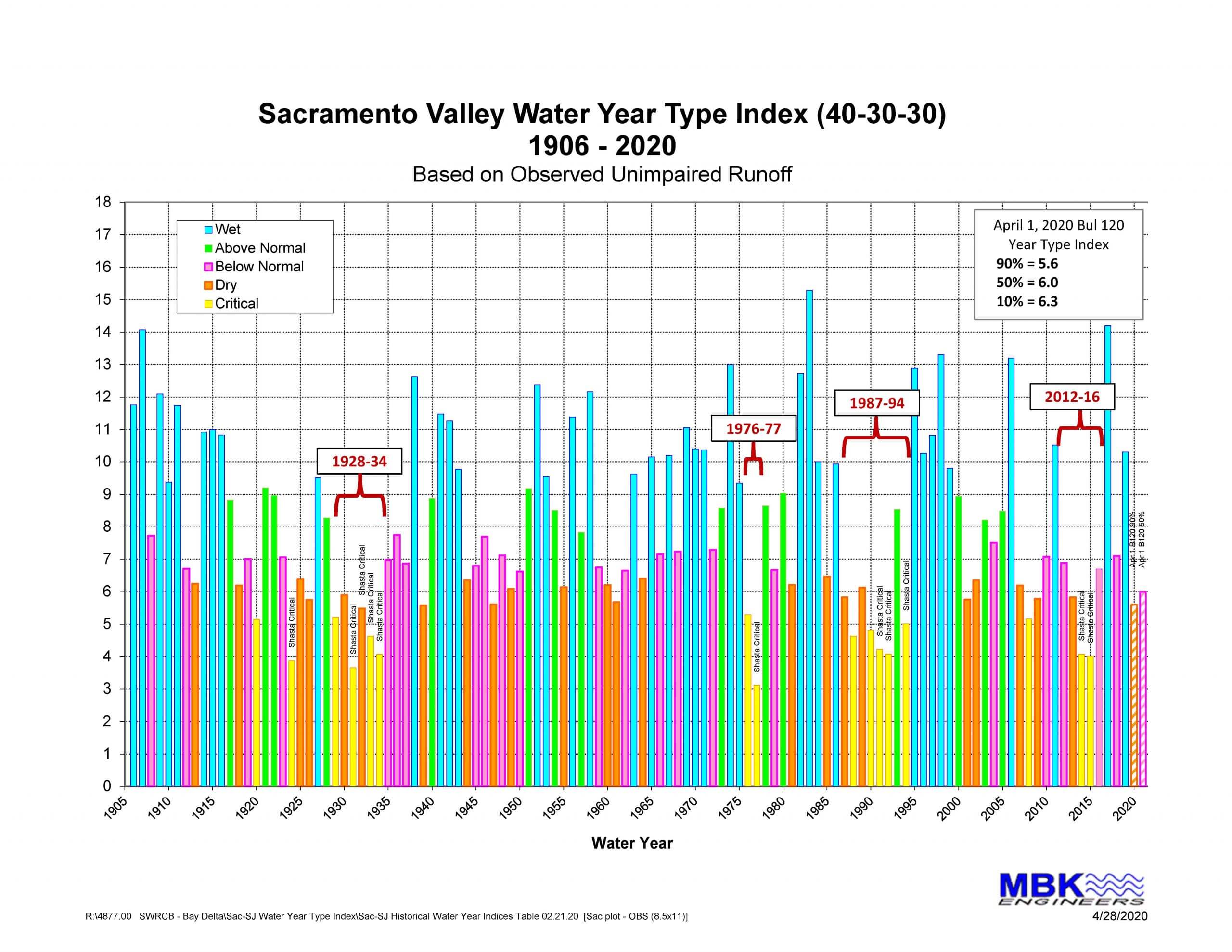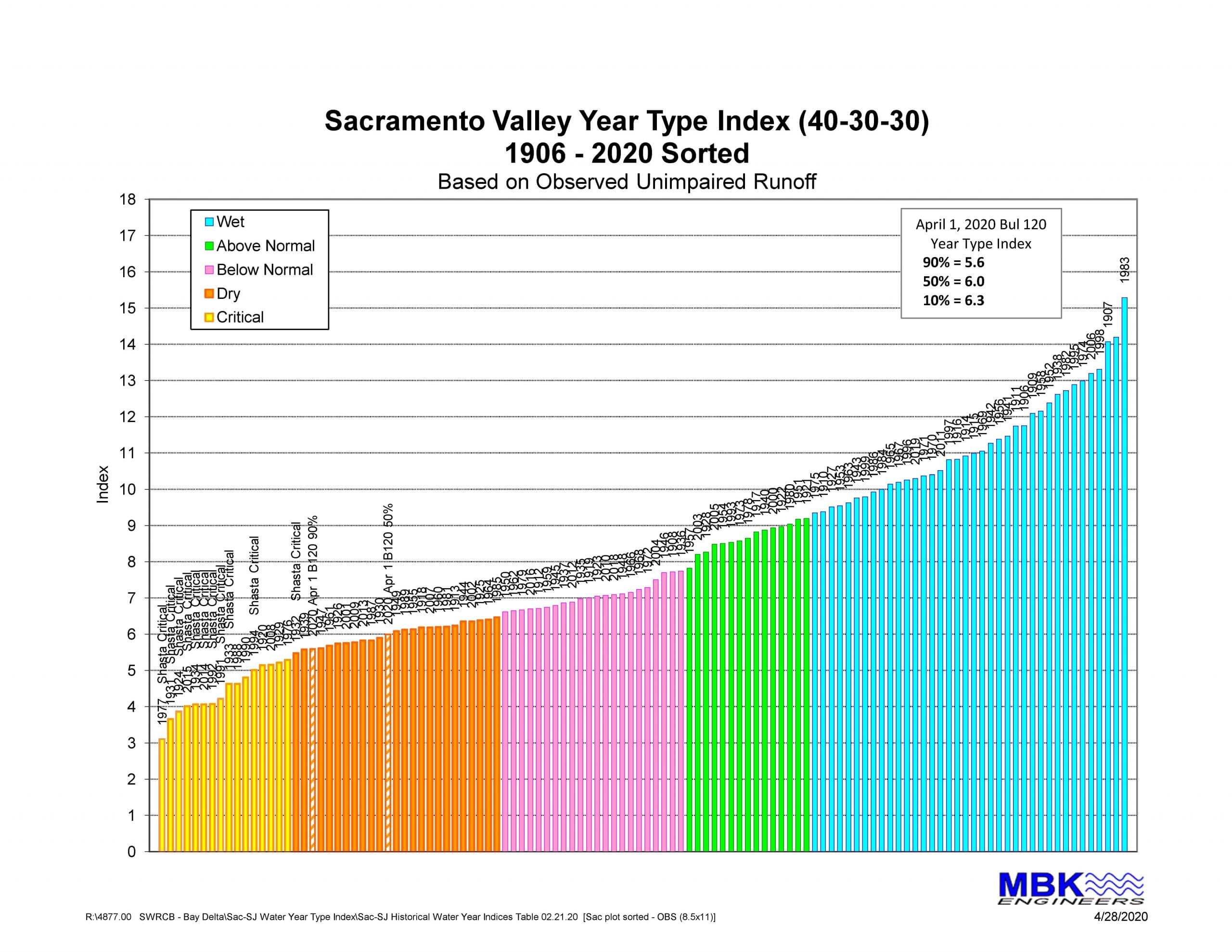Water management in the Sacramento River Basin has always been defined by dramatic variability in climate and conditions—extreme events of drought, flood, and fire have shaped this region. Across the basin, experience navigating these highly variable conditions has informed a robust set of water management practices to address their impacts while managing water for multiple benefits.
Today and into the future, these extreme events of drought, flood, and fire are expected to increase in frequency and volatility, with their impacts magnified by a changing climate. In response, water resources managers in the Sacramento River Basin are taking action to address these changing conditions.
In addition to the historic set of practices, innovative new approaches are being deployed to address the new challenges of increasingly extreme conditions. In addition to managing the impacts of extreme events, each of these actions presents opportunities to enhance water supply reliability and improve conditions for fish and wildlife now and into the future.
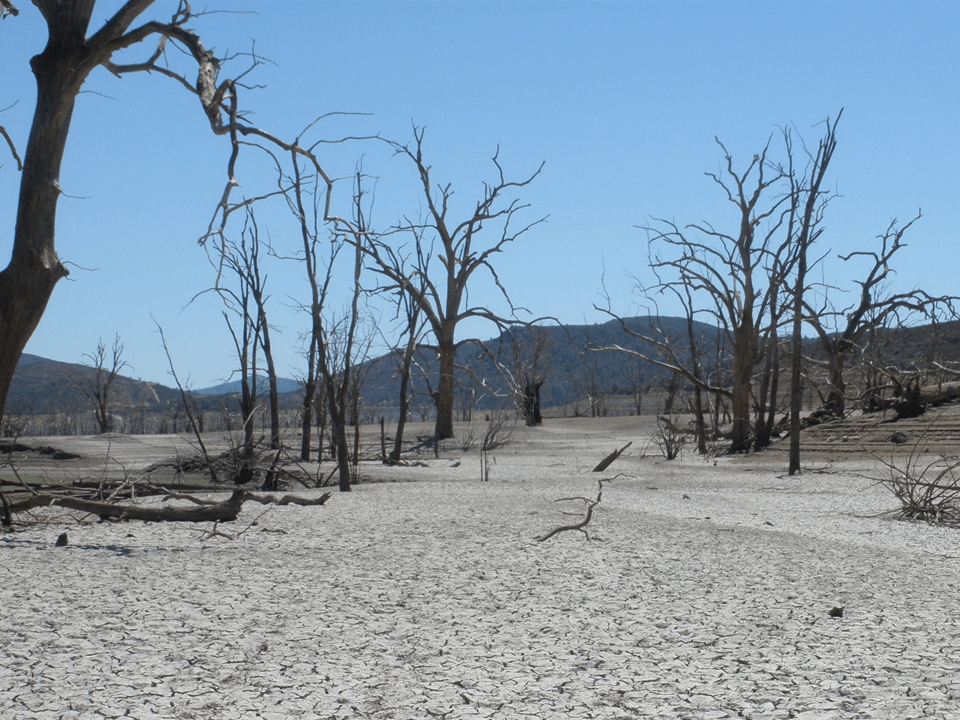
Drought
California’s climate dictates that multi-year dry periods are inevitable. Most recently, California and the Sacramento River Basin experienced an extended drought from 2012-2016, with the critically dry years of 2014 and 2015 presenting unprecedented challenges and resulting in hundreds of millions of dollars in lost farm production, diminished wildlife habitat, and reduced urban water supplies.
Taking Action:
- Implementing the Water Rights Priority System: Water rights and contracts are the foundation for water operations throughout California. The orderly implementation of the water rights system provides economic and environmental stability to address dry year challenges and prepare for future droughts. In the dry year of 2015, water supplies in the Sacramento Valley were reduced by 25 percent or more in every part of the region, with some areas and people having their surface water supplies reduced 100 percent. The severity of these cuts was based on the specific conditions and underlying water rights or contracts. While any reductions negatively impact the beneficial uses of water in the region—including water for cities and rural communities, farms, fish, birds and recreation—water suppliers have planned for reductions and in many places are able to develop and implement alternative water management plans in response to the lack of surface water in dry years due to the certainty that the water rights priority system provides.
- Advancing Sites Reservoir – Reliable Water Supplies for Multiple Benefits: Sites Reservoir is an innovative 21st century water project—an off-stream regulating reservoir on the west-side of the Sacramento Valley that can store water for the future by capturing it during high runoff periods, and then releasing it for various beneficial uses at a later time. With the project’s location upstream of the Delta and near the Sacramento River, water in Sites Reservoir would serve multiple benefits in the Sacramento River Basin, as well as the Delta and the rest of the state. Sites would be a dramatic enhancement to California’s water system and the first storage project in California with a dedicated supply for the environment. Sites can provide a freshwater ecosystem water budget that would help provide flexibility and make water available during drier years—which would help ensure water availability for the ecosystem—as well as be operated to address the uncertainties of a changing climate by creating resilient environmental and water supply benefits.
- Expanding Conjunctive Use in Urban and Agricultural Areas: Throughout the Sacramento River Basin, water suppliers are expanding the coordinated use of surface water and groundwater supplies in different year types to advance sustainable water management, including efforts to achieve balance under the Sustainable Groundwater Management Act (SGMA). By using surface water when supplies are plentiful and then switching to groundwater during drier years, water managers can ensure that both of these supplies are used to serve multiple benefits across all year types while minimizing negative environmental and economic effects. Examples of conjunctive use efforts include the Sacramento Regional Water Bank in the Sacramento metropolitan area and the ongoing work of many agencies in agricultural areas.
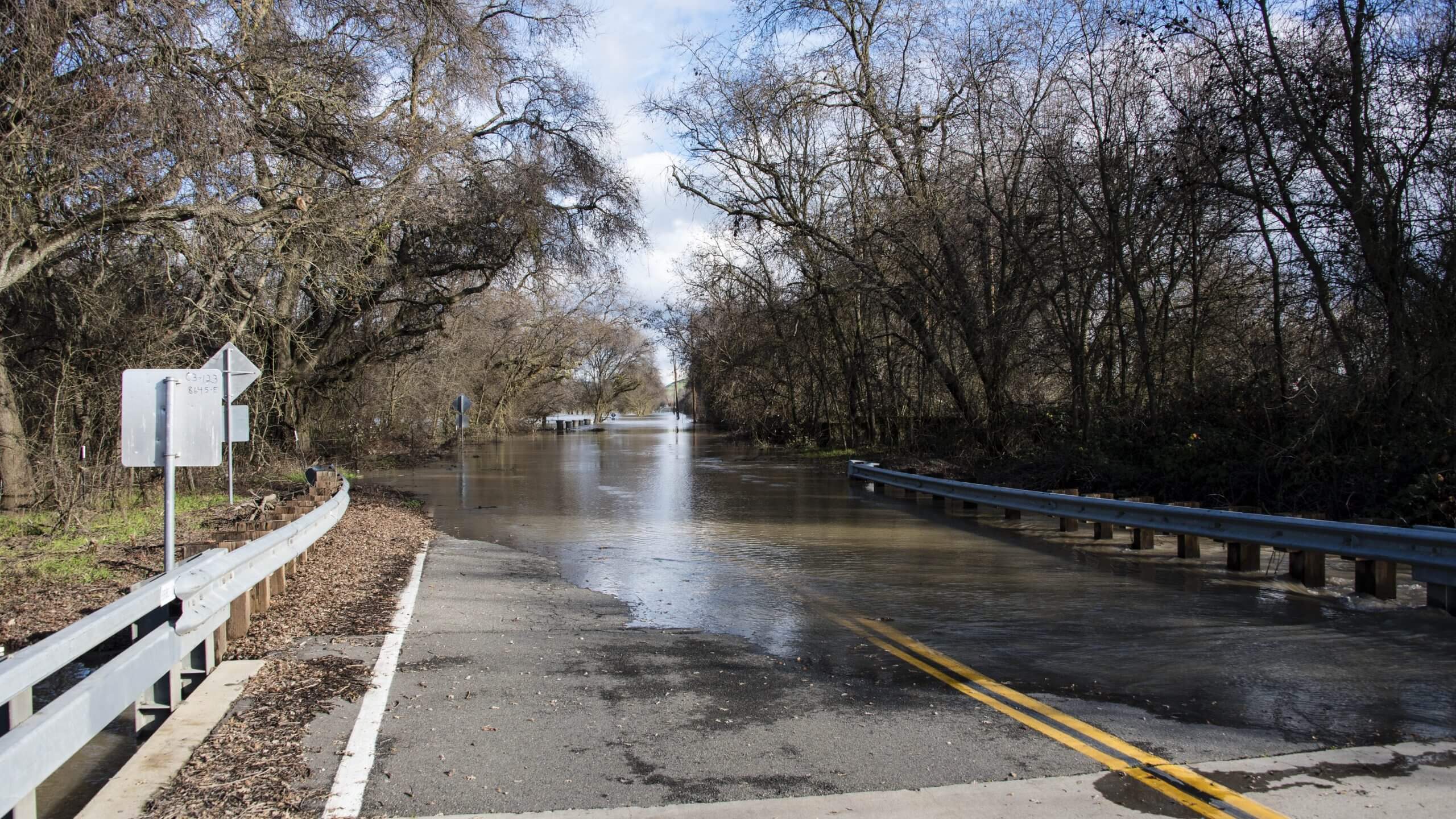
Flood
Historically, expansive flooding outside of river channels created an “inland sea” that stretched across broad sweeps of the Sacramento Valley floor during much of the year. Beginning in the 19th century, private citizens and state, federal and local government entities undertook basin-wide efforts to construct flood management facilities, including dams, levees, weirs, and bypass channels, to control these floods. The resulting system has allowed agricultural and urban development to flourish in the historic floodplains.
Despite the fact that the Sacramento Valley flood control system is one of the most complex in the world, weak points in the system have been exposed during catastrophic flood events in recent history, most notably the floods of 1986 and 1997, which resulted in loss of life and billions of dollars in damage.
Taking Action:
- Enhancing Flood Protection: The Central Valley Flood Protection Board has developed the Central Valley Flood Protection Plan (CVFPP)–California’s strategic blueprint to improve flood risk management in the Central Valley. The plan was first adopted in 2012 and is updated every five years. The CVFPP lays out strategies to prioritize the state’s investment in flood management over the next three decades, promote multi-benefit projects, and integrate and improve ecosystem functions associated with flood risk reduction projects. Together with complementary actions and investments by federal and local agencies, implementation of the CVFPP enhances flood protection for urban and rural communities and provides a broad suite of environmental benefits.
- Reactivating Floodplains for Fish and Wildlife: While the flood protection system’s primary function is to protect people and property from flooding, there are now efforts underway to reactivate the historic floodplain in the Sacramento Valley to improve conditions for fish and wildlife while maintaining the economic vitality of the agricultural economy. Strategically planned efforts to spread out and slow down water across this landscape mimics natural flows and provides multiple benefits year-round by allowing farmers to cultivate rice and other crops for humans during the spring and summer, habitat for wild birds, reptiles, and other fauna in the fall, and food for migratory birds and native fish species in the winter. While the historical floodplain has been divided by levees, there are actions that can be taken by water suppliers and landowners on both the “wet” and “dry” sides of levees to reactivate the historical floodplain. The combination of these different actions mimics natural, variable-depth, long-duration flood patterns, restores the ecological processes that drive healthy and productive aquatic ecosystems, and presents potential landscape-scale opportunities.
- Advancing Forecast Informed Reservoir Operations: Across the Sacramento River Basin, reservoirs are operated primarily to provide sufficient capacity for flood protection during historically wet periods of the year before shifting to operations for downstream benefits—including environmental flows and deliveries for farms and communities—during other times of year. The goal of Forecast Informed Reservoir Operations (FIRO) is to modernize these shifts in storage project operations using data from watershed monitoring and state-of-the-are weather and water forecasting. The insights provided by these new technologies allow water managers to operate reservoirs based on actual current and forecasted conditions, rather than calendar based. Complementary investments in infrastructure—including secondary spillways and other enhancements to storage facilities—can provide flood protection benefits for future extreme events while enhancing water supply reliability for multiple benefits.
- Recharging Groundwater During High-Flow Periods: Water resources managers in the Sacramento River Basin are increasingly working to capture water during high-flow periods to recharge groundwater. For example, the Yolo County Flood Control and Water Conservation District was the first entity in the state to secure a temporary water right permit from the State Water Board to divert high-flows during the winter. This permit allows for the diversion of excess flows on Cache Creek into the irrigation conveyance and delivery system during wet periods for the express purpose of groundwater recharge, an important strategy for securing a reliable supply of water for the future. Water resources managers also continue to work through various state and federal initiatives to facilitate enhanced recharge, including the Department of Water Resources’ Flood-Managed Aquifer Recharge (Flood-MAR) strategy.
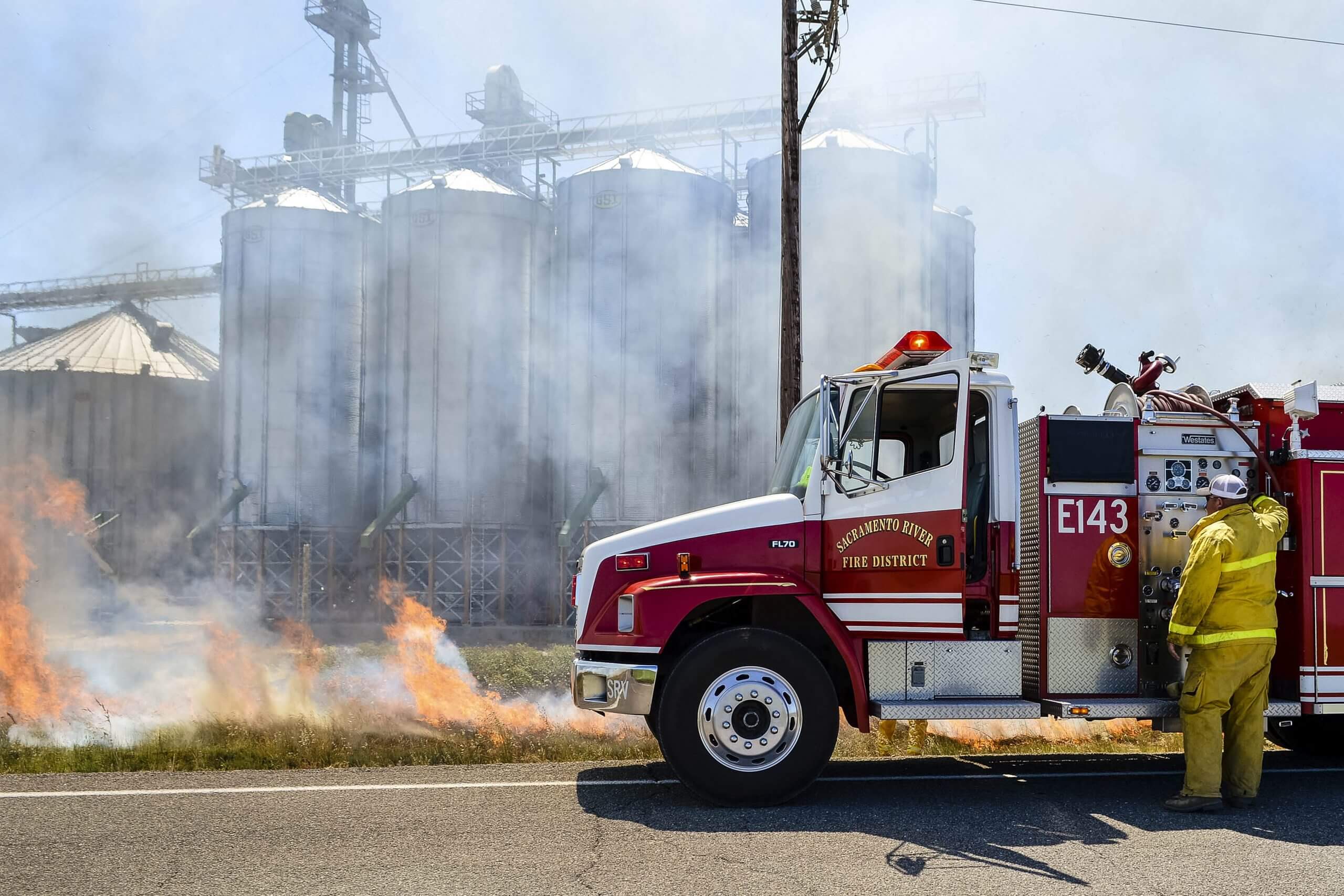
Fire
Recent wildfires of unprecedented scale have severely impacted Northern California. The Camp, Carr, Mendocino Complex, King, and Valley fires, among many others in recent years, demonstrate the calamitous effect that wildfire can have on communities, ecosystems, and water supply.
Taking Action:
- Actively Managing Forested Headwaters: Actions to promote healthy forests and headwaters can reduce impacts from catastrophic wildfires as well as increase water supply reliability, improve water quality, increase renewable energy supplies, and enhance habitat for fish and wildlife. Examples of these management activities include the Placer County Water Agency’s French Meadows Forest Restoration Program in the American River watershed and the Yuba Water Agency’s pioneering efforts in forest protection and watershed restoration, including financing these activities through Forest Resilience Bonds. These programs are leading examples of innovative, collaborative, and replicable models for improving the health of our forested headwaters.
For more information, please contact Adam Robin at arobin@norcalwater.org.
